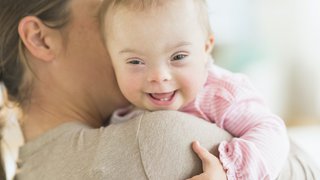
Approximately 10 percent of school-aged children and 28 percent of teens suffer from migraines – intense, disabling headaches that keep them from playing, interacting with peers, and concentrating in school.
Migraine is far and away the most common condition we see in our pediatric Headache Clinic. UT Southwestern and Children's Health manage the only neurologist-led pediatric headache clinic in North Texas, and we are focused on giving our patients and their parents access to the most advanced techniques to manage migraines.
For example, we are currently participating in a phase three clinical trial to determine whether adult migraine treatments given in child doses can effectively prevent episodic migraine attacks in children ages 6 to 17. (Learn more below)
Pediatric migraine treatment is a two-way street. We love giving young patients and families tools to live happier lives with less pain, and it's up to them to follow the plan that works for them. It can be a lot to keep track of, from lifestyle changes to medication management.
Our neurologists work with parents and children to develop a pediatric migraine action plan (PedMAP) for each patient. It outlines a daily strategy to help control their migraines, and it provides guidance on what to do when various levels of pain strike.
Not every patient will become migraine-free. But getting an accurate diagnosis and sticking to a neurologist-guided PedMAP can give your child more headache-free days, fewer emergency room trips, and a more enjoyable experience at home and school.
Is it migraine or something else?
It can be difficult for parents to know when they’re child is experiencing a migraine. Generally, a child may be diagnosed with migraines after they've had five severe headaches that fit migraine criteria: causing light or noise sensitivity, nausea, vomiting, and/or aura – sensory disturbances such as seeing sparks or zig-zag patterns in their peripheral vision right before an attack.

Your child's first visit will involve a deep discussion about their daily routine. We'll talk about their current medications and lifestyle routines that might trigger migraines, including:
- Diet and hydration
- Exercise and sports
- Medication – what has and hasn't worked
- School and work schedules
- Sleeping and waking
We'll also discuss the type and frequency of their headaches. Definitions matter – to get the most effective, least invasive treatment, we must first exhaust all noninvasive options. In general, we follow these criteria:
- Probable migraine: Infrequent but severe headaches without identifiable triggers or full sensory symptoms (aura).
- Episodic migraine: Children have up to 14 headache days a month, some with aura.
- Chronic migraine: Having 15 or more headache days a month, for at least three months, with four to five of the headaches meeting migraine criteria.
The next step is conducting a physical and neurological exam to see if your child is having problems with coordination, movement, or sensation. Some patients may need advanced imaging, such as CT, MRI, or spinal tap to rule out other conditions.
Once we understand your child's routine, neurological health, and treatment history, we can begin to design your child's PedMAP.

Your child's PedMAP
The pediatric migraine action plan will help kids stay on track with migration prevention. It's also a guide for how to seek and provide appropriate, timely treatment when migraines strike at home and school. See an example from Headache: The Journal of Head and Face Pain.
PedMAPs are divided into three color-coded zones:
- Green: Focuses on lifestyle modification, as well as recognizing and controlling triggers. Non-steroidal anti-inflammatory drugs (NSAIDs) such as ibuprofen or Tylenol can be used as needed.
- Yellow: Focuses on quickly controlling and ending mild to moderate migraines. The goal is to become headache-free within two hours. Medication beyond NSAIDs may be required.
- Red: Characterized by severe migraines that are non-responsive to typical treatment, seek emergency care for migraines with new or unusual symptoms such as vision loss, face or body paralysis, confusion, or inability to respond.
Your child's PedMAP will include best practices for migraine management, as well as spaces to enter appropriate treatments and medication doses. There are many effective treatment options for pediatric migraine, depending on your child's condition and their ability to participate in their own care.
Pediatric migraine treatment options
The best headache treatment plan is whatever works the best for your child. These are some of the most common treatments we provide, which may be given individually or in combination.
Lifestyle modifications to decrease migraine triggers
- Diet: Certain foods such as chocolate or eggs and preservatives such as MSG or aspartame can trigger migraines. However, it is more common that issues related to migraines are linked with missing meals or nutrients. We recommend that patients not skip breakfast – trying to concentrate at school on an empty stomach can be mentally and physically stressful.
- Hydration: Dehydration can be a trigger for migraines. It's important for students to carry to a water bottle or be allowed water breaks throughout the day.
- Sleep: Sleep deprivation – as well as getting too much sleep – can trigger migraines. The Sleep Foundation says students in elementary school need 9-11 hours of sleep nightly, and teens need 8-10 hours.
- Stress: In kids, a range of factors can increase stress, such as overscheduling, school pressure, or problems with friends. We can strategize with your child to lower unnecessary stress and manage their daily responsibilities.
- Medication management: Skipping or forgetting doses can increase the risk of migraines. Our medication management team can help your child develop a routine and stay on track.
- Computer use: Too much electronic device use strains the eyes and brain with blue light and can cause regular headaches due to poor posture. We recommend your child take regular breaks to stretch and move if they must use devices for extended periods.
Analgesics to relieve pain
Options may include antihistamines (Benadryl), acetaminophen (Tylenol), ibuprofen (Excedrin), or ketorolac (Acular) tablets or injections.
We typically do not recommend long-term use of these medications, many of which are non-steroidal anti-inflammatory drugs (NSAIDs) due to the risk of kidney problems and stomach or intestinal bleeding. Maximum recommended doses will be based on your child's weight.
Antiemetics to reduce nausea
These drugs are known as dopamine antagonists. While effective, they can cause side effects such as sedation, hypotension, and jitters. Often, these medications are prescribed with Benadryl to ease side effects.
Medication options may include:
- Metoclopramide HCI (tablet or solution)
- Promethazine (tablet, injection, or suppository)
- Prochlorperazine (tablet, suppository): This drug is also used as a non-migraine severe headache treatment.
- Ondansetron (tablet, suppository)
Injections to target pain sites
- Anatomical regional targeted (ART) Botox Method: This procedure places targeted Botox injections only at the patient’s pain sites.
- Nerve injections: Also called "nerve blocks," these medications can treat acute migraines or potentially prevent them.
- Steroid injections: Steroid injections can help relieve symptoms during the episode and during the "breathe out" period – the few days of recovery after a migraine attack.
Triptans to get quick, effective migraine relief
These drugs can be used twice daily to quickly and effectively relieve migraines. Some of them include Rizatriptan, also known as Maxalt, which is FDA approved for 6-year-olds and up;
Zolmitriptan, or Zomig, for 12-18; and Almotriptan, or Axert, for 12-18. Triptans work best when taken early in the migraine process and can relieve pain and symptoms within an hour. However, they do not prevent future migraines or reduce migraine frequency.
Triptans are available as tablets, nasal sprays, and injections. We've put together a list of commonly prescribed triptans for children to young adults.
Advanced treatment and clinical studies
In rare cases, pediatric-approved medications are not enough to mitigate a child's migraine. Many treatments shown to be effective in adults are not approved for children by the U.S. Food and Drug Administration (FDA). But the 2003 Pediatric Research Equity Act gives the FDA authority to require clinical studies of child-appropriate formulations of new drugs.
Our pediatric headache program is participating in a trial of one such medication called galcanezumab, a calcitonin gene-related peptide (CGRP) that can effectively prevent episodic migraine attacks in children ages six to 17. Eric Remster, M.D., is the principal investigator for UT Southwestern's site of the REBUILD-1 phase 3 clinical study of galcanezumab.
The drug blocks the CGRP protein and helps regulate vascular dilation, which is part of the migraine process. Galcanezumab binds to molecules that contain the CGRP protein, rendering the protein inactive. This action reduces blood vessel dilation, preventing migraine attacks.
Three other drugs that work similarly are in various stages of clinical trials around the U.S. We expect that CGRP medications, if approved in children, will provide hope and effective relief for children struggling with migraine. Early data appear comparable to adult data, and we plan to begin patient enrollment in late spring or summer 2021.
Pediatric migraine episodes are disruptive and painful – and it's frustrating when treatment attempts fail. But help and hope are available. Our neurologist-led pediatric headache clinic can give your child the advanced, personalized care they need.
To visit with a pediatric migraine expert, call 469-497-2500 or request an appointment online.










